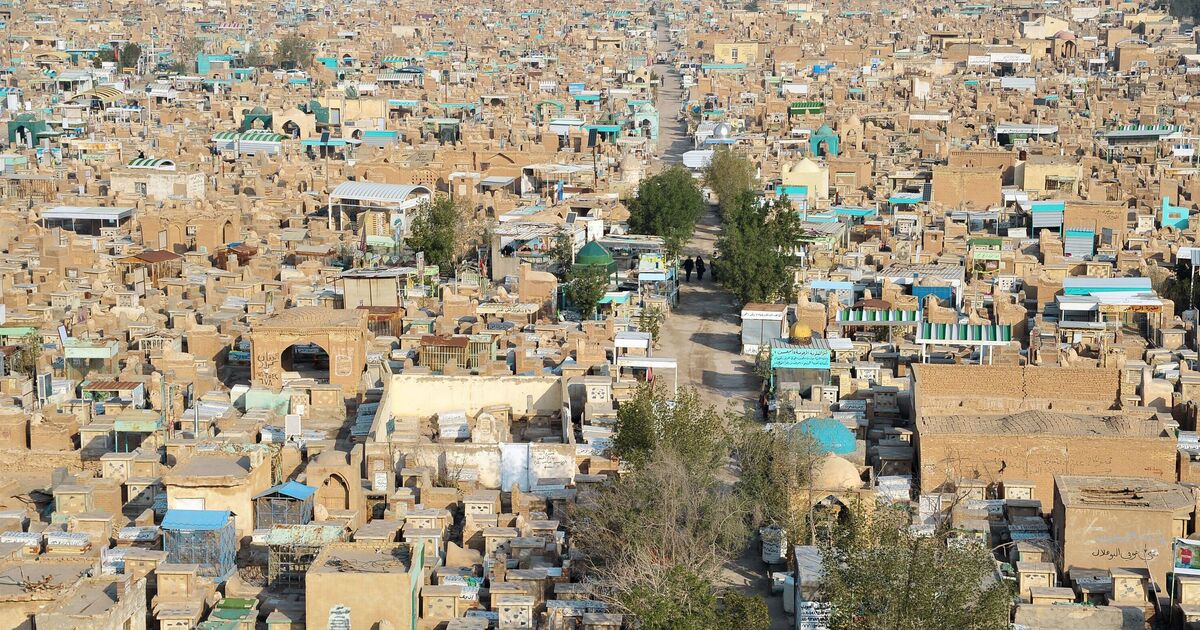The world’s largest necropolis is home to a staggering six million bodies.
The Valley of Peace in Iraq covers an area roughly equivalent to 844 football pitches, but space is actually running out and the price for a plot rising, as daily burials stretch back 1,400 years.
It’s estimated around 50,000 new bodies are buried in Wadi al-Salam (Arabic for peace valley) every year because of its huge cultural significance and importance.
The necropolis sits in the holy city of Najaf, meaning it’s extremely important to Shi’ite muslims, as it’s near the shrine of Ali ibn Abi Talib, a cousin and son-in-law of Prophet Mohammad and the first Shia Imam.
It is even on UNESCO’s World Heritage Site tentative list, and it’s visited by millions of pilgrims and mourners every year.
Shi’ite Muslims worldwide can request to be buried here, but with land increasingly limited, burial plots have seen significant price hikes.
Since 2014, the cost of a standard 25-square-meter family plot has nearly doubled, reaching about £3,030 (5 million Iraqi dinars) in 2021.
Historian Jihad Abu Saybi, who works at the cemetery, noted that burials increased significantly after the Islamic State’s occupation of a third of the country in 2014. While the average number of daily burials used to be 80-120, by 2014, it surged to 150-200.
At this sacred cemetery, there’s a specific burial routine, which starts with washing the body and wrapping it and conducting funeral prayers at the adjacent shrine of Ali.
The freshly wrapped body is then taken around the shrine, before being moved to the cemetery where verses from the Qur’an are recited.

